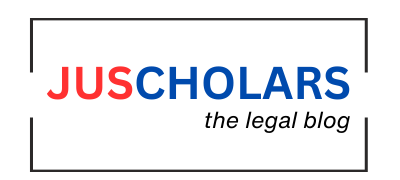Genericide of a trademark refers to the phenomenon of loss of distinctiveness of a protected/ registered or well recognised mark due to its repeated and widespread use as a generic connotation[1]. The present piece seeks to explore in detail what it entails, its implications with respect to the rights of the IPR holder and the strategies which may be adopted to curb it.
What comes to your mind when you hear the following words, “Google, Escalator, Thermos, Xerox?”[2], the association that comes to mind is almost instant, but what is surprising is that all these terms are not used to refer the whole categorization of the product but rather talks about the particular trademark safeguarded products in the broad category, which by way of usage have acquired status of commonality and genericise. They are mere words know which cannot be traced back to a specific source/origin or brand name but are now fulfilling the purpose of a genus instead of species[3]. In other words,“[G]enericide occurs when a trademark that already has federal protection falls into common usage such that it no longer identifies a brand. In other words, if a term goes from being identified as a source of goods to describing a category of goods or services, it’s considered to be genericized.”[4]
Furthermore, genericide in more severe jurisdictions like the USA, is considered to be abandonment of the protected status of the mark, as it is considered the responsibility as well as the liability of the trademark holder to take proactive measures to defend their mark from misuse or commonality. The minute the mark becomes nonspecific, it is believed that the exclusive right of the IPR holder has come to an end.[5] The Indian Trademarks Act, 1999 via section 9 and 11[6] emphasise the need for individuality and distinct qualities of a mark to qualify for protection as a registered mark and also to enjoy the rights that flow with this uniqueness as a brand or business.[7] The High Court of Delhi in the instance of Dabur India Limited v. Emami Limited[8], held that, generic words cannot form the subject matter of grant of exclusive rights, herein referring to Chyawanprash, However, it is noteworthy that, what was decided was the query of law or the relevant legal question applying to the present matter, and not on whether the affected bloc should discontinue to benefit from their exclusive and absolute rights over the exclusive or non-specific word –Chyawanprash.[9]The Indian SC in Parakh Vanijya Private Limited Vs. Baroma Agro Product and Others[10][11], held that common or generic words may find protection when used in a combination with other non-obvious and distinctive words as a composite generic trademarks, namely “Baroma Gold” in the present case whose registration was allowed despite opposition by the holders of mark, on using “Malabar Gold” which was being previously used by the respondents herein for their special brand of biryani rice, found to be deceptive and similar to the mark of the appellants, namely “Malabar”. Hence, in the present case, the apex court also observed and held that the generic and non-distinctive expression that is ‘Malabar’ can’t be conceded to a single business/ commercial entity.[12][13]
In the digital era, the risk of TM dilution or genericide is greatly amplified by the omnipresence of the social media, search engines and e-commerce platforms[14], contrary to the traditional marketing setup where the brand owners have more control over the use of their registered Trademarks, while on the other hand the digital platforms lead uncontrolled, unwarranted global usage. For e.g. take the example of “Google” which is despite being a dominant type of search engine, the name has become synonymous with “searching the web”. Till date Google has been able to prevent genericide by actively asserting and policing the use of the TM, illustrating the definite balance between brand reputation and genericism.[15] However, not every brand is as lucky to survive the fate, that google has been beating of by a sliver. Cue Aspirin, trademarked by Bayer which has become all but a genera for acetylsalicylic acid and Tiffany’s single diamond solitaire on a 6 pronged set up, while a few other commonalities like Velcro (Don’t say Velcro campaign[16]) and Xerox ( to be used as a noun or adjective but never as a verb) fight hard to keep a similar (mis) fortune at bay.[17]
The most pertinent question that now comes to mind is what are the strategies that may be adopted by the exclusive owner to curb this menace of genericide and to safeguard its novelty and exclusive ownership, the following points prove to be noteworthy[18]–
- To opt for inherently distinct, non-generic and unique marks for their products or services.
- Educating the public on the correct usage and to vociferously advocate the generic attitude. (Google, Velcro etc)
- Monitoring the use of marks in a continuous manner
- Policing of marks against any third-party use or infringement.[19]
In conclusion, the phenomenon of trademark genericide poses a significant threat to the brand owners chiefly because of the accessibility of digital platforms, as well as the reach of social media where the spread of information is rapid and the shift of public perceptions is nippy. It is to be noted that while the legal consequences of trademark generic site are well established, it is also up to the brand owners and the companies to take proactive steps to prevent their marks from losing their unique and distinct quality and becoming a part of the genera. This is usually achieved by educating the public about the mark, monitoring its usage and proactively enforcing their rights. All of these steps if followed concomitantly and correctly, will prevent the trademarks of the companies from becoming generic terms. As for businesses, particularly operating in India. understanding the legal landscape of traditional trademark protection is crucial to maintain the competitive edge.
Conversely, in the current manipulative and competitive marketplace in the present digital era and otherwise, where royalty of a brand and its identity are tantamount, the risk of looming trademark genericide cannot be overlooked.
[1]Vanshika Batra, ‘Understanding Genericide and Its Impact on Trademarks’ (2 April 2024) available at https://taxguru.in/corporate-law/understanding-genericide-impact-trademarks.html#google_vignette accessed 24 October 2024.
[2]Avnee Tewari, ‘Death of a Trademark: Genericide – Lexology’ (19 June 2020) available at https://www.lexology.com/library/detail.aspx?g=5027217f-1db2-4ebb-9838-8696e97c6191 accessed 24 October 2024.
[3]Ruchi Singh, ‘Generic Words as Trademarks: A Comprehensive Assessment of Legal Boundaries & Practical Implications | Article | Chambers and Partners’ (28 August 2023) available at https://chambers.com/articles/generic-words-as-trademarks-a-comprehensive-assessment-of-legal-boundaries-practical-implications accessed 24 October 2024.
[4]‘Genericide | Genericization Trademark Definition Examples’ (28 May 2014) available at https://www.mandourlaw.com/genericide/ accessed 24 October 2024.
[5] ibid.
[6] The Trade Marks Act, 1999, S 9, 11.
[7]Shrabani Rout, ‘Trademark Genericide: Victims Of Their Own Success? – Trademark – Intellectual Property – India’ (9 June 2017) available at https://www.mondaq.com/india/trademark/600598/trademark-genericide-victims-of-their-own-success accessed 24 October 2024.
[8] 112 (2004) DLT 73
[9]Pranit Biswas and Girishma S Chintalacheruvu, ‘Lost In The Crowd! – The Life Of Generic Trademarks – Trademark – Intellectual Property – India’ (20 May 2022) available at https://www.mondaq.com/india/trademark/1194548/lost-in-the-crowd-the-life-of-generic-trademarks accessed 25 October 2024.
[10] ibid.
[11] AIR 2018 SC 3334
[12] Supra at Note 9
[13]Sparsh Jain, ‘Critical Analysis of Generic Trademark Acquiring Distinctiveness, By: Sparsh Jain’ (13 December 2019) available at https://www.latestlaws.com/articles/critical-analysis-of-generic-trademark-acquiring-distinctiveness-by-sparsh-jain/ accessed 25 October 2024.
[14] Iris HY Chiu and Gudula Deipenbrock, Routledge Handbook of Financial Technology and Law (Iris Chiu and Gudula Deipenbrock eds, Routledge 2021).
[15]Ruchi Singh, ‘Protecting Trademarks In The Digital Age – Trademark – Intellectual Property – India’ (14 June 2024) available at https://www.mondaq.com/india/trademark/1480204/protecting-trademarks-in-the-digital-age accessed 25 October 2024.
[16]‘Don’t Say Velcro – USA’ available at https://www.velcro.com/original-thinking/the-velcro-brand-trademark-guidelines/dont-say-velcro/ accessed 29 October 2024.
[17]‘“Genericide”: Brands Destroyed by Their Own Success – BBC News’ available at https://www.bbc.com/news/business-27026704 accessed 29 October 2024.
[18]‘Protecting Trademarks from Genericide | Practical Law’ (28 January 2014) available at https://uk.practicallaw.thomsonreuters.com/4-544-5626?contextData=(sc.Default)&transitionType=Default&firstPage=true accessed 29 October 2024.
[19] ibid.
Author: Ms. Ashima Pury is a BA., LLB(H), LLM, UGC-NET, PhD (pursuing) PhD Scholar at GNLU and Assistant Professor of Law, Delhi Metropolitan Education affiliated to GGSIPU.






